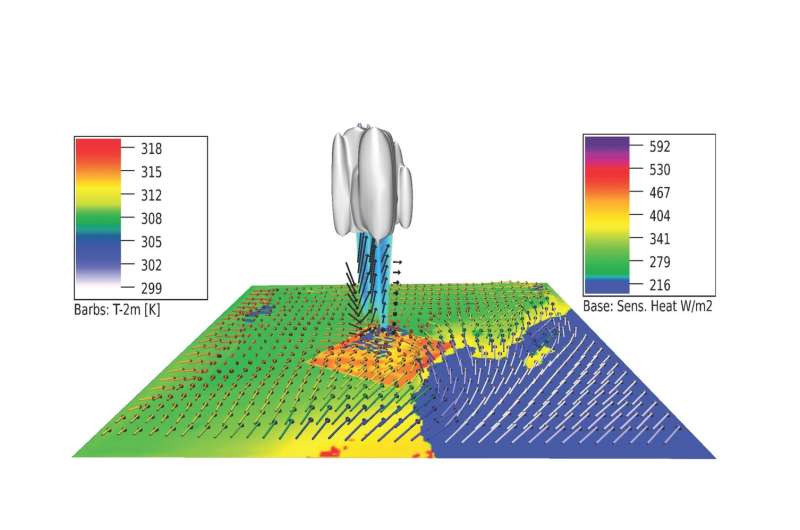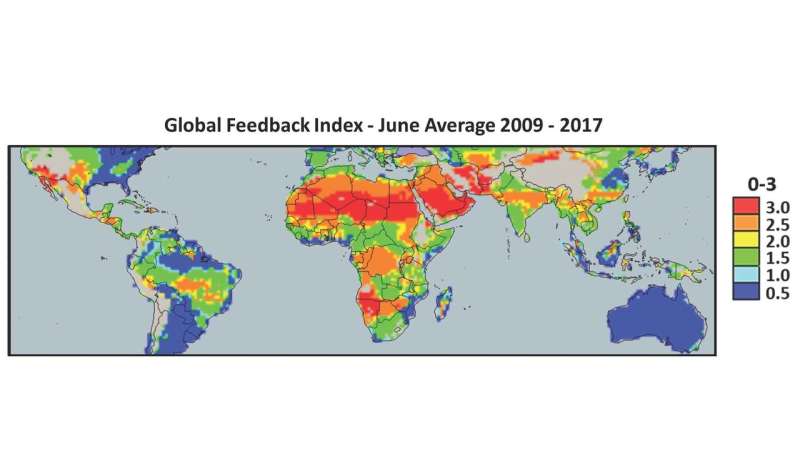September 3, 2019 report
Desert plantations found to enhance rainfall

A pair of researchers at the University of Hohenheim has found evidence that suggests planting forests in desert areas can lead to an increase in local rainfall. In their paper published in Proceedings of the National Academy of Sciences, Oliver Branch and Volker Wulfmeyer describe their study of desert plantations and what they found.
As much of the world continues to ignore the looming environmental disaster of global warming, some scientists are taking matters into their own hands. In this case, Branch and Wulfmeyer looked into the possibility of planting certain types of trees in desert areas as a way to reduce carbon in the atmosphere. In so doing, they found evidence that planting forests in desert areas can lead to an increase in rainfall.
The researchers created models to represent the planting of small forests in two arid regions—one in Oman, the other Israel. They also chose a type of tree that has a chance of surviving the hot, dry climates in such areas—the jojoba.
Their model showed that planting a small forest (roughly 100 square kilometers) resulted in multiple local environmental changes. They found that because jojoba trees are dark, less light was reflected back into the atmosphere. Also, the air contained more particulates released by jojoba trees. The models showed that water vapor was able to condense on the particles, resulting in the formation of rain droplets. And finally, the texture of the trees resulted in changing wind patterns. The net result was significantly more rain in places with newly planted forests.
The researchers note that the increased amount of rain was not enough to sustain the trees, but it changed the economic possibilities of planting them. They also note that their model showed that the amount of increase in local rainfall would differ from site to site. They suggest that if world leaders worked with land managers, suitable sites could be found and planted. Such plantations, they claim, could have a major impact on the amount of carbon removed from the atmosphere.

More information: Oliver Branch el al., "Deliberate enhancement of rainfall using desert plantations," PNAS (2019). www.pnas.org/cgi/doi/10.1073/pnas.1904754116
Journal information: Proceedings of the National Academy of Sciences
© 2019 Science X Network





















